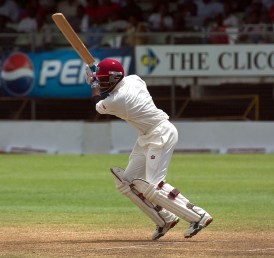Going against the Grain
Divy Tripathi |
“…You just don’t turn it off! It wasn’t my war! You asked me, I didn’t ask you! And I did what I had to do to win! But somebody wouldn’t let us win!”
These are the words uttered by Marcus Stoinis after almost singlehandedly propelling Australia to a win with a splendid 146 against New Zealand, only for his efforts to go in vain John Rambo in First Blood.
The portrait created is of a combatant in the aftermath of a disastrous conflict, who is not ready to give in to forces of man or nature. A one-man army if you may. To draw a parallel to this situation in the game of cricket, a match where everything is lost and done for, only for one player to keep fighting till the end.
This is not without examples in individual games but what about an entire Test series? A player outplaying the rest of his side is exceptional in itself, however, the stakes are raised higher when performances around him have been below par throughout the tour.
But how would one define a series as where ‘everything is lost and done for’? For that, we would consider those series where the team with adverse results against its name has lost all (or nearly all) of the games. In other words, they stood little chance of winning any game.
In this article, we will take a look at such exceptional batting performances over the last twenty years.
- Rahul Dravid vs England (2011): India entered England as the World Cup holders, ranked first in Test match cricket and on the back of an all-format win in West Indies. They were yet to lose a Test series under the captaincy of MS Dhoni.
They returned without an international win on the tour, being wiped out 0-4 in the Test series. Injuries and bad form caught Indian players like a plague as they weren’t able to show even a semblance of fight barring for a few sessions in Trent Bridge.
This seemed to have no consequence on Rahul Dravid, the indomitable wall of Indian cricket for over a decade and a half. He stood tall in what was the sternest Test of Indian team since the 1999 tour down under. The 38-year-old was the third highest run getter in the series at an average of nearly 77, scoring three centuries and facing 965 balls. The next best for India were Sachin Tendulkar averaging at 34 and MS Dhoni at 31.
His exceptional performance also included instances of him carrying the bat, remaining 146 unbeaten in the final Test at the Oval. Unfortunately for India, this was to be one of the last moments of Dravid in whites for he retired in 2012.
- Mohammad Yousuf vs England (2006): Pakistan of mid-2000s weren’t the strongest of sides that Pakistan have possessed. Yet, they still had the talent from late 90s and early 2000s to bank upon.
Apart from the fact that they were touring England, a place where they hadn’t lost in a long time, they had experienced a turnaround of fortunes under Bob Woolmer. They had beaten England, India and Sri Lanka in the 2005-06 season and with England under the pump after defeats against Sri Lanka, they might have fancied their chances again in a country that always seemed to favour their skills.
England came on the top winning the series 3-0, with Pakistan coming close to a positive result only in the final game (though England seemed to be hanging in there at 298-4) which ended in what is known as the Oval Test controversy. But an English side missing many of their Ashes 2005 stars such as Ashley Giles, Simon Jones, Michael Vaughan and Andrew Flintoff, was able to dominate proceedings on back of young stars like Cook, Bell, Pietersen and Panesar with able guidance from likes of Strauss and Harmison.
Pakistan on the other hand saw disappointing performances from most of their players. They would’ve stood a better chance if some of their bowlers had exchanged their averages with the batsmen. Only players who stood out were Younis Khan, Umar Gul and Mohammad Yousuf.
Mohammad Yousuf in particular batted as if on another plane. Not only was he the highest run-getter in the series (631, next best from either side was Andrew Strauss at 444) he averaged 90 per innings with three centuries.
But then it shouldn’t have been a surprise to many as 2006 was his year. His 1788 Test runs in that calendar year are still a world record. Interestingly, Yousuf would only score a solitary Test hundred after his annus mirabilis.
- Shivnarine Chanderpaul v England (2007): Chanderpaul was a man who often played the role of a monk in a side usually caught in chaos for the majority of his playing career. (Though not by any means incapable of letting himself loose, as his 69 ball hundred versus Australia and various adventures as an opener in limited overs cricket would Testify)
In 2007, he found himself up against the challenge of England after the great Brian Lara had retired during the world cup. West Indies in white kits were no longer a force to reckon with and it showed in the 0-3 result. Chanderpaul though, used to performing in adverse situations for some years now, was the second highest run-getter of the series only twenty runs behind Kevin Pietersen. (He featured in three Tests as compared to Pietersen’s four)
He batted in five innings and was able to cross fifty in each of them, ending with an average of 148.66 for his effort. His contribution for the tour didn’t end there as he continued his form in a tied twenty20 series and an ODI series which West Indies ended up winning.
Additional Fact: Chanderpaul was often among the few men standing for West Indies in a tough decade. He rendered a very similar performance at home versus Australia in 2008, crossing fifty in five of his six innings in that series as well. And along with Chris Gayle he was the one of the top two run-getters in the Wisden trophy 2004, which England won 4-0 at home.
- Andy Flower vs India (2000) and South Africa (2001): The ‘Flower Power’ years or the time when Andy Flower entered the ‘zone’ and refused to leave. Zimbabwe can rightly call late 90s to early 2000s the golden period for their side. This period saw them challenge the top sides of the world, beat them in Test series and at the world stage.
This was no doubt down to the fact that their greaTest ever batsman Andy Flower played in this period. In the above two instances, he bested the likes of Dravid, Kallis, Tendulkar, Kirsten, Ganguly and Gibbs.
Across eight innings in these two series, he crossed fifty on seven occasions. While Zimbabwe lost both the series, they were able to draw two Tests which was no mean achievement for them, given that India were one of the toughest assignments to tour and South Africa were one of the best sides in the world. His finest moment came in the defeats, where he scored 341 runs in Harare and 253 in Delhi. These are second and ninth most runs by a batsman in a Test defeat. South Africa and India won the Tests convincingly but not before Andy Flower had left his mark on the game.
He scored 540 runs at the average of 270 in India and 422 at 211 versus South Africa.
- Brian Lara vs Sri Lanka (2001): Or the reason why this list exists. His 351 vs Sri Lanka in Colombo are the most runs by a batsman in a Test defeat. Vaas and Murali picked 26 and 24 wickets at the average of 15 and 22 respectively as West Indies were routed in all the games. (Losing by 10 wickets, 131 runs and 10 wickets)
Ramnaresh Sarwan proved to be a capable ally of Lara scoring 318 runs at an average of 53. What makes Lara’s run majestic is that his total of 688 at 114.66, dwarfed even the second best West Indian effort in a series where most of the West Indian batters failed to find a solution to the Murali-Vaas combination.
If we take out Sarwan’s contribution, Lara alone scored more than rest of his team-mates combined. His scores read 178, 40, 74, 45, 221 and 130. The corresponding team scores were 448, 144, 191, 190, 390 and 262.
Defeats can take a toll on even the best of batsmen irrespective of the form with which they enter into the series or the form they display for the first few innings. When in full-flow Lara created his own rhythm, regardless of the collapses around him. This is what helped him score exceptionally in Sri Lanka and in several other encounters where West Indies were not up to the mark. Given the state of things, many of his great knocks ended up in failures in the latter half of his career, but this shouldn’t take away from his performances.





Leave a comment